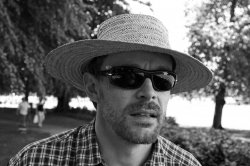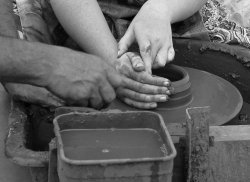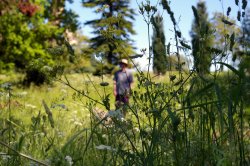Studio Lighting is completely different than nature photography - you seem to know that already, and this thread is focused on the images above, and that was what I was referring to.
Again, I've described what bringing lighting to the equation in the specific images referenced above would do. The swan picture is the most glaring example of where bringing lighting to the equation would make the image better, and anyone who's done any amount of bird photography would agree- because it's obvious to anyone in the field. You've bought no sane counter argument. You've tried to describe something as "professional," which I have rebutted. I've also, and will further discuss the fact that nature photography at it's higher levels, includes lighting.
Of course indoor photography requires lighting, I'm not retarded, and I have been in those situations where I have lit a scene with studio lighting, but not hot-shoe or direct flash, ALWAYS FILTERED. And, if you are going to fill flash something, you want a DIFFUSED source because you don't want to wash out the image. Hmmm, I think you're getting a little worked up about
You're showing a lack of understanding of lighting. Not diffusing a light source doesn't produce a "washed out" image, overpowering does- and you can do that with or without a diffuser. A diffuser changes the angle of the light hitting the subject and therefore produces a softer light- sometimes that's appropriate, sometimes it's not- depending on the mood one wants to set in the scene. Directional lighting helps to bring out details. Sometimes you don't want soft light- there are no absolutes, most especially in artistic photography. I'd recommend that you get a copy of "Light: Science and Magic" to fill in your knowledge gaps. Washing out comes from intensity, not directionality. Just like people who think softer light comes from lights placed further away, you're simply not showing an understanding of how light and lighting work.
all these different niches, and I don't think this poor fellow who started the thread is looking into a dissertation on the various locations and usages of niche photographic lighting techniques.
Asinine comments like "a good photographer doesn't need flash" are what got us here. You're the one who's trying to define "always," "good," "art," and "professional." I'm simply rebutting your inane statements.
So now you hold the definition of good photographers, as well as "true photography?" I know thousands if not hundreds of thousands would disagree with your definitions.
If you are a true photographer, you are an artist, and an artist does not need to change what the art is, he only captures it for others to enjoy also.
No, an artist *creates* art. A documentary look at a moment in time isn't always art. You do a major disservice to anyone who spends their time creating images using their imagination rather than just a tool. Only an idiot would try to bound the definition of art or what all artists can and can't do to create their art.
So, therefore, if I look at a magazine, I see nothing but COMMERCIAL photography - not art.
Then you should get better magazines, as well as a better vision. Just because an image has been purchased doesn't make it unartistic. Nature Photographer, National Geographic, View Camera and literally hundreds of other magazines contain a very good number of artistic images.
And only recently has art photography begun to use flash because of pressure from, well people that want manipulated art, with the advent of photoshop and digital photography - you cannot deny that.
I most certainly can deny that- folks like John Shaw, Art Wolfe, et al. have been using fill flash for quite a bit longer than most folks have been using Photoshop or digital cameras- starting in the early '80's top nature photographers were bringing flashes into outdoor pictures with regularity. These folks sell lots of images as fine art nature. I think you're ignorant of the history of what you're professing an opinion on.
Perhaps your narrow worldview is only now opening enough to see that many, many photographers have known for quite a long time, or perhaps it's only now that you're being exposed to good photography because the "secrets" of getting great images are no longer secret, expensive or all that difficult- but it's not that recent a practice.
Here's what Franz Lanting has to say:
http://www.lanting.com/phototips_opflash.html and here are some relevant excerpts:
I cant imagine going into the field without strobes today. Modern equipment makes this very easy. It wasnt always that way.
For me, its important that I can communicate something special about the subject through my photography. With flash, I can literally spotlight a part of the scene so the viewer knows exactly whats essential to the image. The flash lets me highlight elements of the composition, isolate key subjects or give a special importance to something. I can use different types of flash light to do this, from harsh, dramatic light to soft, gentle and diffused illumination.
(Don't tell Frans he should
always diffuse his light! You might make him cry!)
Then softboxes got smaller and left the studio for the field in the early 80s. Commercial photographers have long known the value of these light modifiers, but they were cumbersome for field use. When small softboxes came out, we were able to gain whole new levels of control.
Well, a "saleable" image goes back into the COMMERCIAL world of photography, and a sellable image for an artist is one not influenced by the buyer that ends up selling because of the shared emotion of the buyer and the artist. You must realize that not everyone is a commercial photographer, and not everyone is a niche photographer.
Once again, you're the one who brought up the term "professional," hence my rebuttal with examples of professional photography that show you're mistaken. Most of my sales are actually fine art, and I suspect I'm more aware of the market than someone who thinks "anyone can do wedding photography." The Mona Lisa is a saleable image, that doesn't make it any less artistic. Your closed-minded views appear to limit what you see tremendously.




